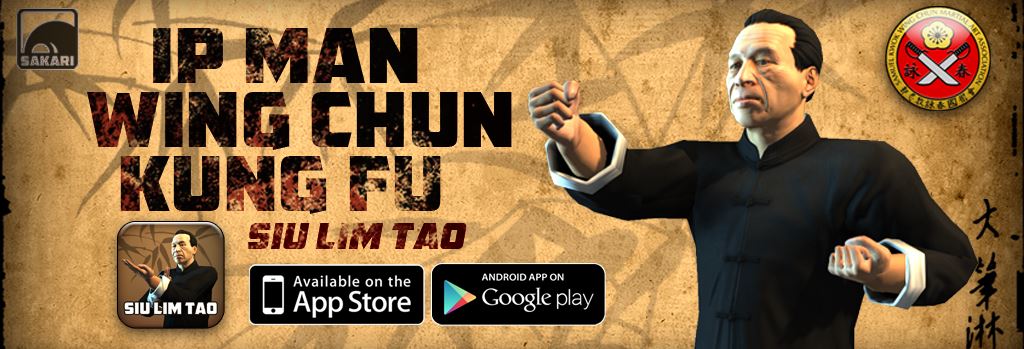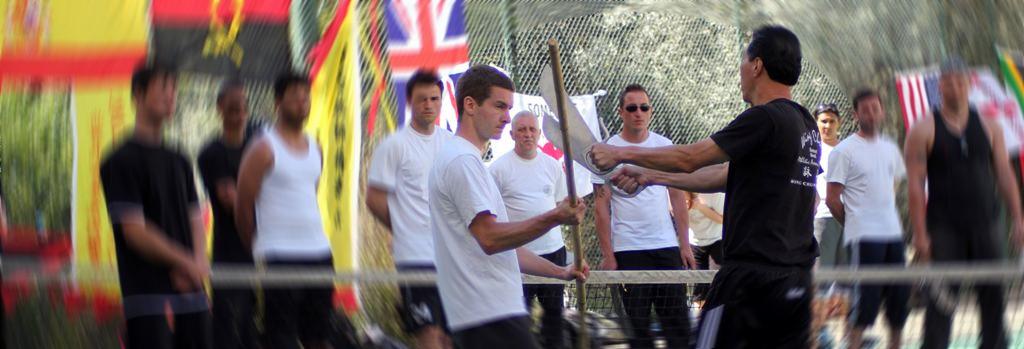The Wing Chun Forms
Article by Dan Knight added on 11 Jul 2012. Last updated on 28 Feb 2013.
About the Wing Chun Forms
The martial art Wing Chun has just three hand forms, one form performed against a wooden dummy and two weapons forms. Compared to some other martial arts is very few. The forms in Wing Chun serve more as a reference for fighting rather than a set of moves which can be directly used in sequence in a real situation. So in Wing Chun once the forms have been learned, the techniques are known, but then they have to be understood and applied. That is the hard part.
The hand forms each train different aspects of the system. It is only when they are combined that they provide the effective martial art that is Wing Chun. Therefore it is hard to say which form is more useful than the others, because the Wing Chun forms are most useful when combined together. For example if Sil Lim Tao was to be abandoned the foundation for the system would be destroyed. The training of power and energy in the first section would be lost, along with the foundation of strikes and blocks. That is why Sil Lim Tao is learned first. However without Chum Kui the basic movement that is used to apply the techniques in Sil Lim Tao and the movement used to bridge the gap between oneself and ones opponent is lost. Without Biu Gee the system is not complete due to the lack of advanced movement, advanced hand techniques and so called emergency techniques for escaping the elbow being pined etc. In addition the dummy form of Wing Chun forces the student to practice their martial arts techniques in the correct position against a solid target.
Therefore it is only when the system is complete that it is most effective. Hence it cannot be said which form is more useful than the others for they are all essential in creating true ability. So how does the system work?
 As expressed earlier the Wing Chun system starts with Sil Lim Tau which trains the power in the legs through the stance and it trains correct use of power and energy of hand techniques in the first section of the form. On top of this it provides the Wing Chun practitioner with a useful arsenal of blocks and strikes. This therefore provides the foundation for the Wing Chun practitioner.
As expressed earlier the Wing Chun system starts with Sil Lim Tau which trains the power in the legs through the stance and it trains correct use of power and energy of hand techniques in the first section of the form. On top of this it provides the Wing Chun practitioner with a useful arsenal of blocks and strikes. This therefore provides the foundation for the Wing Chun practitioner.
 Chum Kui then introduces kicks and movement into the system and also show how to use both the feet in footwork and kicks at the same time as the hands in the form of blocks and strikes not forgetting that Chum Kui also trains the use of power from the hips. It also trains the practitioners body positioning and foot positioning which with turning enables the practitioner to deal with threats from multiple directions, enabling quick efficient turning. This therefore builds on what Sil Lim Tao has provided.
Chum Kui then introduces kicks and movement into the system and also show how to use both the feet in footwork and kicks at the same time as the hands in the form of blocks and strikes not forgetting that Chum Kui also trains the use of power from the hips. It also trains the practitioners body positioning and foot positioning which with turning enables the practitioner to deal with threats from multiple directions, enabling quick efficient turning. This therefore builds on what Sil Lim Tao has provided.
 Bui Gee, and to a large extent the Mook Jong Dummy form both build on the Chum Kiu stepping by introducing circle stepping which is most effective when combined with Chum Kiu straight stepping or Biu Ma. Biu Gee also brings in the training of perfect use of last minute power, enabling the practitioner to use all their techniques to maximum efficiency. Other techniques such as Kop Jarn enable the practitioner to block when trapped or strike at extremely close distances, this combined with other 'emergency techniques' like the Biu Gee from under the elbow enable the practitioner to recover from bad situations, and also the recover at the end of the form which allows for recovery from a fall . Hence Biu Gee completes the system.
Bui Gee, and to a large extent the Mook Jong Dummy form both build on the Chum Kiu stepping by introducing circle stepping which is most effective when combined with Chum Kiu straight stepping or Biu Ma. Biu Gee also brings in the training of perfect use of last minute power, enabling the practitioner to use all their techniques to maximum efficiency. Other techniques such as Kop Jarn enable the practitioner to block when trapped or strike at extremely close distances, this combined with other 'emergency techniques' like the Biu Gee from under the elbow enable the practitioner to recover from bad situations, and also the recover at the end of the form which allows for recovery from a fall . Hence Biu Gee completes the system.
 However let us not forget the Dummy form which is extremely useful for applying the system in all aspects. It also contains a few additional techniques like the neck pull and some additional kicks. The system, as can now hopefully be seen builds from one stage to another. And once fully learnt and most importantly once fully understood, the forms can be used and applied together in a fighting situation. With the use of Chi Sau training this will hopefully, come instinctively to the practitioner as he/she becomes as one with their martial art.
However let us not forget the Dummy form which is extremely useful for applying the system in all aspects. It also contains a few additional techniques like the neck pull and some additional kicks. The system, as can now hopefully be seen builds from one stage to another. And once fully learnt and most importantly once fully understood, the forms can be used and applied together in a fighting situation. With the use of Chi Sau training this will hopefully, come instinctively to the practitioner as he/she becomes as one with their martial art.
Sub categories for The Wing Chun Forms
Sil Lim Tao
Sil Lim Tau, sometimes referred to as Siu Nim Tao, is the first of the hand forms of Wing Chun Kung Fu. It teaches the student the basics of the martial art.
Chum Kiu
Wing Chun Kung Fu's second form Chum Kiu builds on the base of knowledge learned in the first form and teaches the practitioner how to use these skills under different conditions.
Biu Gee
Biu Gee Biu Gee is the third and final hand form of the Wing Chun Kung Fu system and is generally only taught to trusted Wing Chun practitioners. Biu Gee contains advanced techniques and emergency escapes.
Dummy Form
Muk Yan Jong sometimes called Mok Yan Chong has 116 techniques that comprise the Wing Chun wooden dummy form as taught by the late grandmaster Ip Man. The form is performed against a dummy to practice techniques.
Pole Form
Luk Dim Boon Kwun literally means six and a half point pole. The techniques in this form are generally taught as the first of the weapons forms in the Chinese martial art Wing Chun Kung Fu.
Knife Form
Info about the Chinese martial art of Wing Chun Kung Fu's final form, Baat Cham Dao or Eight cutting knives. The butterfly knife form in Wing Chun.
Tags for this article:
Sil Lim TaoChum KiuBiu GeeWooden Dummy FormFormsTechniques



